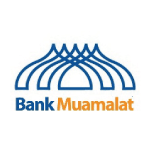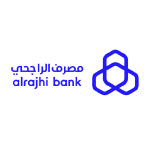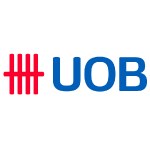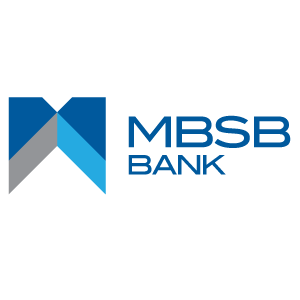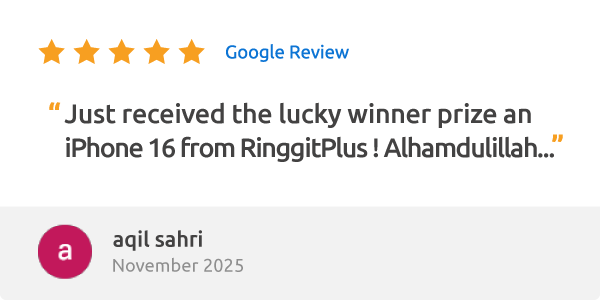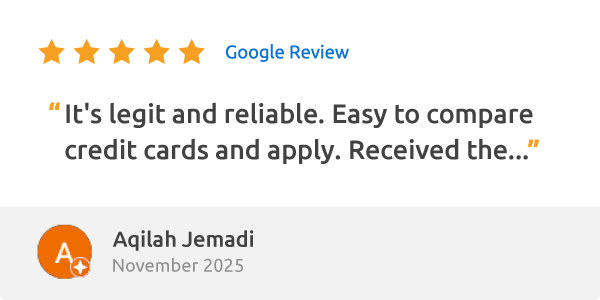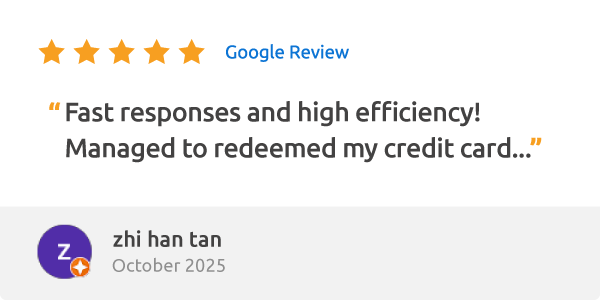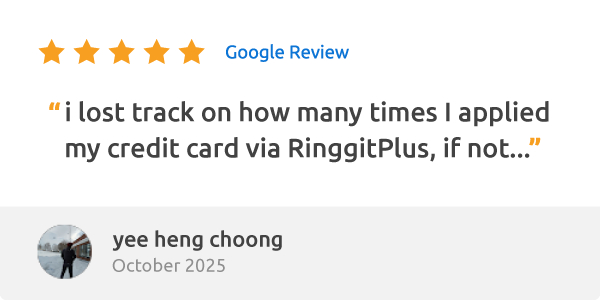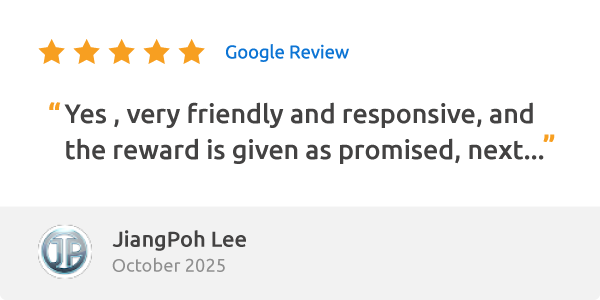Best Housing Loans in Malaysia
A house is arguably the largest expense one will make in their lifetime, and it is virtually impossible to be paid for in full - usually, a home loan or a mortgage is required to finance a house purchase. These financial products help you own a property by paying it off over time, making it easier to own your dream home.
There are various types of home loans or mortgages available in Malaysia, and looking at how expensive a house costs these days, let’s help you get up to speed about housing loans and how they can help finance your dream home.
What you should know about home loans in Malaysia
For first-time home buyers, the process of buying and owning a house is usually confusing and sometimes overwhelming, no thanks to the various jargon you’d need to be familiar with as well as the various steps it takes from making an offer to purchasing all the way to getting the keys in your hands.
So, before you go ahead and apply for a mortgage, there are a few things to know to help you understand this process better.
Home loan category
There are three types of home loans or mortgages: basic term loans, semi-flexi loans, and full-flexi loan. These three (3) loan types differ from each other in important ways, so take some time to understand which type of home loan suits your needs best.
A basic term loan has a fixed repayment schedule which means you will pay a fixed monthly loan instalment throughout the loan tenure. However, there is one thing about this loan that you should pay more attention to.
Due to its fixed nature, you cannot reduce the outstanding balance by making advance payments - this is only available in semi-flexi and full-flexi home loans. Instead, any advance payment will offset the incoming instalments - you will not save on interest or profit charges whatsoever.
Plus, if you wish to make advance payment for your basic term housing loan, the process can be tedious as well whereby you may need to visit the bank or write a letter to the bank to make a request.
For these reasons, basic term loan mortgages are quite rare these days.
Meanwhile, a semi-flexi loan also has a fixed repayment schedule throughout your loan tenure. But the key difference is that you have the option to make advance payments on top of your scheduled monthly instalments, which will offset the principal balance which accrues interest.
The additional payments that you’ve made will automatically be deducted from your principal which is the initial loan amount that you borrowed from the bank. This will then help lower the interest rate charged on your instalments.
For example, if your monthly instalment is RM2,500 and your outstanding principal amount is RM300,000, and you recently received a bonus of RM10,000 that you intend to use as an advance payment to your home loan, you can do so. The RM10,000 will clearly be shown as an advance payment in your online banking dashboard, and the bank will only charge interest on RM290,000 and thus reduce the monthly interest charges.
If you need the funds that you put as advance payment, you can withdraw them back to your bank account. However, this process may take a few working days and the bank usually imposes a fee for each withdrawal.
Finally, a full-flexi loan is an enhanced version of a semi-flexi house loan, because this loan comes with a linked current account that will automatically deduct your instalment as scheduled every month.
With a full-flexi loan, you can more easily reduce your interest or profit charges compared to a semi-flexi loan. Simply deposit any extra funds you have to the linked current account, and this amount will offset against the outstanding principal balance and thus reduce the interest or profit charges.
As an added benefit of a full-flexi housing loan, you can also withdraw your extra funds in your current account anytime that you wish without fees or charges (unlike with a semi-flexi home loan). However, a current account usually has a small monthly or annual management fee.
Housing loan interest rate
It is an amount a bank charges you for using their money and is often displayed in a percentage value. The interest rate is determined by two factors: the bank’s Base Lending Rate (BLR) which in turn is influenced by the Overnight Policy Rate (OPR) set by Bank Negara Malaysia, and the spread, which covers the bank’s operating costs and profit margins.
Usually, home loan interest or profit rates between banks will not be too far away from each other. For example, the Maybank Islamic HouzKEY offers a low home loan profit rate of 2.88% p.a., while another bank may offer 2.90% p.a. or 2.95% p.a. Don’t be fooled by the small percentage difference though - over the course of 30 years, even a 0.01% difference in rates can mean tens of thousands of Ringgit in interest or profit. Therefore, you should always find the lowest possible interest or profit rate offered to you.
More importantly, home loan interest or profit rates aren’t the same for every individual. The bank will always include the individual’s credit health into consideration before offering a customised interest/profit rate - the better your credit health, the lower your rate can be.
On a separate note, banks charge interest or profit in two ways, depending on the type of home loan: fixed and variable.
For fixed interest rates, the rate does not change throughout the loan tenure. Interest or profit is calculated upfront, so pre-paying or making advance payments will not reduce the interest or profit charges whatsoever. Fixed interest or profit rates are applied on basic term loan mortgages.
Variable interest rates, on the other hand, are based on the current Base Rate (BR) set by Bank Negara Malaysia, which means it can go up or down throughout the course of your loan.
Here’s how it works: the current BR for CIMB is set at 2.75% p.a., which means its home loan interest or profit rates will be slightly higher than this amount (due to the addition of the spread). Also note that the higher the BLR is, the higher the home loan interest rate will be.
Margin of finance (MOF)
This refers to the number of funds that the bank is willing to lend you to buy a house and it is generally assessed based on the type of property you are buying, its location, your age, and most importantly, your credit health. As such, the MOF is not fixed and is at the discretion of the bank.
For first-time home buyers, the MOF that you may be able to acquire is as high as 90% for both completed or under-construction properties, with a loan period of up to 35 years or up to 70 years of age (whichever is earlier). However, this is highly dependent on the bank’s risk assessment of the borrower’s credit health. As a result, Standard Chartered may offer an applicant up to 90% in financing through its Standard Chartered MortgageOne™ product, while another bank may only decide to offer 85% or lower if its internal risk assessment is more strict.
Meanwhile, there is another option that is relatively new to the market: a rent-to-own scheme where the bank finances up to 100% of the loan amount and you only need to pay your monthly instalment. However, rent-to-own products are usually a partnership between the bank and developer, and as such, it is only eligible for certain new property projects in some states. One such example is Maybank Islamic HouzKEY, where you could get up to 100% financing on your new home but is only available for certain eligible properties (you may browse via www.maybank2own.com) of up to RM2 Million within the Klang Valley, Johor, and Penang.
So how does the MOF work? Let’s take this example: the house you are buying costs RM800,000 and if a bank offers you a loan with 90% MOF, the loan amount will be RM720,000 (800,000 x 90%). The remaining 10% will be the downpayment which you’ll need to pay for yourself to the property developer or current property owner (for sub-sale properties).
Lock-in period
A lock-in period is a time frame in which you will be charged a fee IF you pay off your home loan in full before your tenure ends.
You must be thinking: how can the bank charge you for paying off your housing loan early and in full? Well, the penalty fee is actually for the bank to get a minimum return on the advance payment that you’ve made.
The penalty fee may be incurred due to a few reasons: you make a full settlement to the bank, you decide to refinance your house, or you are selling your property. Do note that the penalty fee for breaching the lock-in period is between 2% - 5% of the loan amount, depending on your bank.
Home loan legal fees and charges
There are four (4) types of fees and charges that you’ll need to pay when taking out a housing loan in Malaysia which include but are not limited to the following:
a) Sale and Purchase Agreement (SPA) and loan agreement legal fees:
- First RM500,000: 1% (minimum RM500)
- Subsequent RM500,000: 0.8%
- Subsequent RM2,000,000: 0.7%
- Subsequent RM2,000,000: 0.6%
- Subsequent RM2,500,000: 0.5%
b) Stamp duty fee:
- 0.5% of the loan amount
c) Legal disbursement fee for Facilities Agreement (FA):
- Typically a few hundred Ringgit
d) Bank’s processing fee for the loan:
- RM50 to RM200
Should I take up mortgage insurance?
Buying a house is a long-term commitment and while we could never predict what is going to happen to us in the future, it is always good to plan and prepare ahead of time so that your family won’t have to take on a financial burden if you pass away or are incapable of working anymore.
When you are about to take out a home loan, do take into consideration buying mortgage insurance too. It will help protect your family from having to pay off your housing loan in case something unfortunate happens.
You probably have heard of MRTA which stands for Mortgage Reducing Term Assurance, and MLTA which is Mortgage Level Term Assurance. But between these two (2) mortgage insurance, which is the right one that you should take?
Let’s get into the explanations!
Mortgage Reducing Term Assurance (MRTA)
This policy provides financial coverage for you, the house loan borrower, in the event of Death or Total Permanent Disability (TPD). It is a type of life insurance whereby the sum insured is designed to reduce throughout your home loan tenure and once your policy ends, your property will not be covered any longer.
What to watch out for: The MRTA does not necessarily cover 100% of your outstanding loan amount if anything unforeseen happens to you. And it is also a 1-to-1 coverage which means you are not able to transfer your current policy to your second house loan if any.
How MRTA works: You’ve purchased an MRTA policy with a sum insured of RM450,000 over a 30-year tenure. Your outstanding balance is RM500,000 with a 4% p.a. interest rate. So what happens if you pass away or suffer from TPD?
Your MRTA policy of RM450,000 will be paid to the bank (where you borrowed your house loan from). But since your outstanding amount is RM500,000, there is still a remaining of RM50,000 to be paid. Your spouse or any of your next of kin will have to pay the remaining balance to the bank.
However, if your outstanding amount is worth RM450,000 which is the same as your MRTA sum insured amount; your next of kin won’t need to fork out any amount of money anymore because your MRTA policy of RM450,000 is payable to the bank and your home loan will then be fully settled by the appointed insurance company.
Is MRTA compulsory? No, it is not compulsory in Malaysia for you to take up the MRTA policy for your mortgage. You have the option to buy or not to buy at all, though some banks may require some form of home loan insurance.
Mortgage Level Term Assurance (MLTA)
MLTA provides whole-life financial protection in the event of Death or Total Permanent Disability (TPD). It is a levelled policy in which the sum insured amount will not reduce over time. Unlike its counterpart, you may transfer your current MLTA policy to another home loan under your name.
But what if you already have whole-life insurance? Will it be redundant to apply for MLTA? Both of them actually are quite similar. The only difference is to which party the payout will be paid.
Generally for whole-life insurance, the payout goes directly to the beneficiary. It serves as an income replacement so that your family won’t be burdened with any financial issues.
MLTA on the other hand, upon your death or TPD, the payout will go to the bank first to pay off your mortgage. And if there’s any balance remaining, it will then be paid to the beneficiary.
What to watch out for: Because it’s a whole life policy, the MLTA is more expensive than MRTA because of its higher premium.
How MLTA works: You bought an MLTA policy with a total sum insured of RM600,000 for 30 years. Your current home loan interest rate is 3% with a principal amount of RM800,000. In the 30th year of your policy, you had an accident where you are not able to work like usual anymore and pay for your home loan instalments.
Let’s say you still have an outstanding balance of RM400,000. Due to your circumstances, the MLTA policy will pay out the total sum insured of RM600,000. The payout will be paid to the bank to cover your home loan balance, which then leaves RM200,000 in balance.
So where does this extra money go? The RM200,000 in balance will be paid out to the beneficiary of your policy. This could be either your spouse or your children or any of your next of kin.
Is MLTA compulsory? No, it is not compulsory for you to buy the policy when you are taking up a housing loan. Given its similarities to a whole life insurance policy, some may argue that it is more beneficial to purchase a whole life policy as an MLTA proxy since the payout will be given to the next of kin directly instead of to the bank first.
How to increase your chances to get approved for a home loan?
For first-time home buyers, the overall process of applying for a home loan can be complicated especially if you don’t have any reliable resources to help you out. You might also be wondering if you’re eligible to apply for a home loan.
Now that you have equipped yourself with the basic information about home loans above, here’s how you could increase your chances of getting your home loan approved by the bank.
- Check your credit score
A credit score is a 3-digit numerical rating that evaluates your creditworthiness based on your credit history. The scores play an important role in your overall financial health – it serves as a good indicator that you’re managing your money well.
And with a good credit score, comes several benefits that you can take advantage of such as fast loan approval, low-interest rates and fees, just to name a few. But of course, the said benefits are subject to the bank’s terms and conditions.
- Calculate your debt-service-ratio (DSR)
It’s important that you know your DSR range which refers to the ratio of your debt to your income.
Banks use this approach to calculate the percentage of whether you’re able to pay back the house loan that you’re applying for.
While banks have their own distinctive DSR requirements following an applicant’s financial background, the ideal DSR range is typically between 30% to 40%. To add, it is also advisable that your monthly home loan instalment should not be more than 30% to 35% of your net monthly income.
For easy calculations, you can use our RinggitPlus Financial Health Check tool to acquire your DSR range for FREE!
- Prove stability in your employment background
Every detail of your employment background is crucial for the bank in order to give the “approved” stamp on your mortgage application. The bank usually will look into matters such as your company background, your yearly income, job designation and so forth.
If your employment background shows stability, the bank will likely approve your house loan application. But if you often jump from one company to another or you have an unstable income (working part-time or by commission for example), you may need to convince the bank by providing them with legal documents as proof.
What documents do I need to apply for a home loan?
Are you ready to proceed with your online home loan application? Most banks generally need the following documents before processing your application, so do have them ready for a smoother processing journey.
And if you have any extra documents such as fixed deposit certificates, Amanah Saham Berhad (ASB) certificate, Tabung Haji account statements, bonds, etc., you can submit any of them too. These may come in handy as they can help increase your chances of getting your home loan approved.
General documents:
- A copy of your MyKad / NRIC or passport
- Salary slips (3 to 6 months worth, depending on the bank)
- Bank account statements
- EPF statements
- Income tax receipts
- Your house booking form
Salaried employee:
- A copy of your MyKad / NRIC or passport
- Salary slips (3 to 6 months’ worth, depending on the bank)
- EPF statements
- Bank account statements
Entrepreneurs:
- A copy of your MyKad / NRIC or passport
- Company registration documents
- Company bank account statements
- Income tax receipts
- Extra documents (utility bills, commission statements, etc.)
Freelancer / Gig workers:
- A copy of your MyKad / NRIC or passport
- Bank account statements
- A copy of your bills, invoices, receipts etc.
- Business registration documents
- Business profile (Facebook account, LinkedIn, etc.)
- Income tax receipts
- Your savings mediums (ASB for example)
Home loan calculator
Now that you’re already on the last part of this article, the next step is to find out your housing loan eligibility using a home loan calculator which you can easily find it online!
To provide you with a breakdown of the home loan amount that you’re eligible for along with the monthly instalments, the housing loan calculator typically requires you to key in the below information:
- The property price
- The financing amount
- Housing loan interest rate
- Tenure
- Down payment (if any)
Owning a house is everyone's dream. We hope this piece of article can in any way guide you through your home loan application journey. Good luck!








